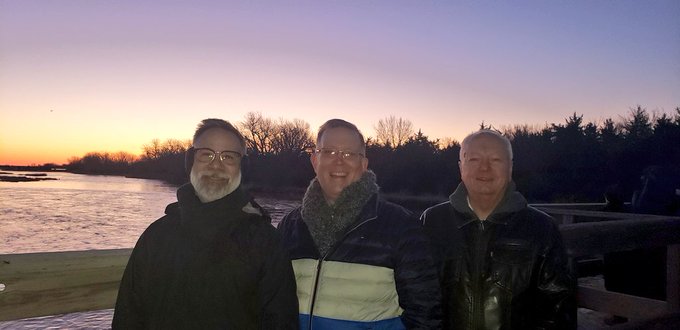Last week, I was in Kearney, Nebraska, for three days, attending and speaking at the Nebraska Planning and Zoning Association annual conference. But that is merely an excuse for being in the right place at the right time, for once in my life, to see one of nature’s more spectacular wonders—the migration of the sandhill cranes. I was told that a nature reserve had estimated their total presence at about 600,000 birds.
In their annual migration from South America, they all funnel through about a 90-mile stretch of the Platte River in Nebraska each spring, right around this time. They come by the thousands. It is easy to see what may attract them. The river is very wide but shallow, just inches deep. Away from predators such as coyotes, they can cluster overnight in the water, then move once dawn brings the rising sun to the landscape. Even before dawn in the chilly March morning, you can hear their awking and cawing, but it becomes a roar once they soar into the sky. I am reluctant to try harder to describe the sound; you simply need to hear it.
On their way north, after the Platte River stopover, they again spread out across a range from eastern Russia along the Pacific Coast through Alaska and Canada. According to the Audubon Field Guide, they feed on a variety of grains and small animals. Their young are able to fly within 75 days but accompany their parents for their first nine to ten months, joining the migration. They prefer marshy vegetation and shallow water for nesting sites.
I credit Chad Nabity, who helped organize the Kearney conference, for inviting me to join the small delegation that met at 5:50 a.m. on Friday morning (March 6) in the chilly morning air to walk down a trail to the wooden bridge across the river at the Fort Kearny State Recreation Area. There we waited in the early morning dark, gloves on to keep our camera hands warm, for the sudden movement of masses of birds, which you can watch for yourself below. Thanks to Chad Nabity for sharing his video file and the photo below of three of us at the bridge.

Jim Schwab